It’s twenty years since the first issue of Alliance. Much has happened in the meantime, both to the magazine and the world it reports on and tries to represent. This account looks at its progress, achievements and tribulations through the recollections of some of those most critically involved in steering it, and reflects on what has changed or might change in future – as well as on what has stayed the same.
The birth of Alliance
Alliance history
• 1996-98 – Alliance published as extension of International Charitable Giving: Laws and Taxations
• 1998-01 – Alliance published as a project of Charities Aid Foundation
• 2001-06 – Alliance published as a founding part of a new non-profit initiative called Allavida
• 2007-now – Alliance published by independent organization called Alliance Publishing Trust (APT)
(which, under other auspices, is also still going). Her publisher and editor suggested the idea of bringing out ‘a journal – there was no such thing at the time – that would gather recent changes in the laws related to cross-border philanthropy well before an update to the book would be produced.’ So working with a small team comprised largely of her corporate clients and designers who worked pro bono, they began.
Its original focus was ‘purely and solely on corporate sponsorship,’ Carole George recollects. ‘None of us had any experience of journalism,’ but, she recalls the excitement of making it up as they went along: ‘we loved putting this thing together…..All we did was find out what corporations were doing and why and we had a theme to each issue.’
Then in 1997, having achieved her professional ambitions, she bought a farm in Virginia. ‘I was going to try to keep updating the book, keep with the journal but it just wasn’t appropriate,’ she says, so she approached Michael Brophy, who was at that time, chief executive of the Charities Aid Foundation (CAF) and who now takes up the story.
His recollection is of meeting Carole George at a conference on corporate social responsibility in Manhattan, organized by American Express. ‘I expressed an interest in what she was doing and she said in effect, would CAF like to take over the newsletter part of it, which was already called Alliance.’ He goes on: ‘At that time – and for 10 years or so previously – I had been pushing CAF into the international field and set up CAF offices in various places around the world so we had a clear interest in understanding the tax breaks that companies could get from the UK and from one country to another, so it was definitely in our interest to become associated with this thing.’
Enter Caroline Hartnell
At this point, Caroline Hartnell, who has been in effect the guiding spirit of Alliance for most its existence, became editor. ‘Caroline had been working at CAF on various things as a part-timer,’ says Michael Brophy ‘and it occurred to me because I thought Caroline was very good, that she might want to have a go at running this thing.’
Other changes were set in motion, too. ‘As Carole [George] had developed Alliance,’ says Caroline Hartnell, ‘it focussed mainly on corporate philanthropy and mainly though not exclusively in the US. Although it wasn’t realizing it at the time, it had a global vision and that seemed exciting. The idea was to really expand it to cover the rest of the world and not just corporate philanthropy, but foundations and individual donors.’
Organizationally, there were clear advantages to being part of a larger organization. For one thing, it gave the magazine an institutional home and, for another, it helped to finance it. CAF ‘put in a certain amount of money and covered any losses,’ says Michael Brophy and, significantly, he himself was able to make some important introductions. ‘We were already very close to the Mott Foundation because CAF and Mott together started the community foundation movement in the UK, so I introduced her to Bill White.’ Out of this introduction, came C S Mott’s support for Alliance. Around this time, too, the Ford Foundation began what was to be a long association with the magazine.
From CAF to Allavida
Evolution of the magazine
• 1996 – First issue of Alliance is published
• 1998 – Alliance re-launched; published three times a year; hard copy only
• 1999 – Moved to four issues a year; still hard copy only
• 2003 – Digital version available, online and to download in PDF
• 2006 – First full colour cover
• 2009 – First full colour issue of Alliance
Another thing was that, although they were always willing to support the cost of employing me, they wanted me to fundraise for the other costs of producing Alliance and that was difficult as part of a big organization. Funders naturally asked themselves, “why would I fund a CAF magazine?”’ Even though that wasn’t the case, CAF was a big, well-resourced organization and external funders would naturally not see the need to support any activity housed there.
At the same time, CAF had an international activity called Charity Know How run by Andrew Kingman which also ‘wanted to get out of the tentacles of CAF’, as Michael Brophy – with what degree of seriousness only he can say – puts it. Distress notwithstanding, he saw the sense of the move. To quote David Carrington, who henceforth comes to play an increasing part in the Alliance story, Michael ‘responded positively to the proposal that there should be, as it were, a management buyout,’ So the two organizations left to form Allavida with David Carrington as chair.
‘It was a good fit,’ says Caroline Hartnell, ‘in the sense that Alliance wasn’t financially sustainable on its own and Allavida was small and didn’t have the two problems associated with CAF. Also, Allavida was an international charity and I knew the people well.’ David Carrington endorses this: ‘Alliance from the start was seeking to be internationalist in focus. Allavida as it became was undoubtedly the same and so there was at an intellectual level at least, a connection, which was quite unusual in the UK at the time.’
As time went on, however, more of Allavida’s attention became focussed on its work in East Africa to the point where, as David Carrington recalls, it ‘became effectively an East African development agency’. Eventually, this became fully and formally the case. In 2006, Allavida moved to Kenya, its assets were transferred there and it became an organization staffed and run by local people.
The formation of the Alliance Publishing Trust
What of Alliance? Caroline Hartnell remembers spending ‘a lot of time thinking what, if Allavida closed, would happen to Alliance. Although we could possibly have made ends meet, it would have been too hard to manage cashflow with no reserves and no guarantees.’ The solution lay with two mainland European institutions. Rien van Gendt, who was a key figure in bringing about what was to become the Alliance Publishing Trust (APT) was on the boards of the European Foundation Centre (EFC), and Network of European Foundation (NEF) and the editorial boards of Alliance at the time. ‘I was very interested in the future of a magazine like Alliance in Europe,’ he recalls.
‘Allavida was moving to East Africa. For me it came together and I remember I started a discussion with Caroline and with David Carrington – “can’t we make Alliance not only editorially independent, but really independent?”’ His idea was to persuade his colleagues in NEF and EFC to ‘look on Alliance as a project in the sense that we create a guarantee fund – the magazine will be viable through grants, through subscriptions but it may have initial difficulties.’
Another key figure in these negotiations and in the formation of APT was Gerry Salole, chief executive of the EFC. ‘It became very clear that there was some vulnerability in its [Alliance’s] funding at the time, so what happened was that a group of us, Luc Tayart, myself and Rien van Gendt had a conversation with David Carrington and thought it might be good to try and set up some kind of independent body.’ The general motive, he says, was that ‘essentially everyone felt it was a good product and understood its vulnerabilities and precariousness and …wanted in fact, to make it a stronger organization.’
So, NEF agreed to set aside a guarantee fund of €300,000, which proved crucial. (It’s worth pointing out that this was a decision with which the EFC was also closely associated, because, in many cases, the same people were involved in both organizations. ‘It’s very hard,’ notes Gerry Salole, ‘to actually say “this is a NEF decision, this is an EFC decision.”’). At all events, NEF was the instrument through which the guarantee was made.
Though, after the initial period, few drawings were made on it and it was able to be gradually reduced, Caroline Hartnell notes that ‘without it, we could never have become independent… because when we opened APT, the grants made to it hadn’t come and we had no cash at all.’ As David Carrington remarks, ‘crucially the Trust had some reserve strength through that guarantee so it was able to make commitments and make plans even if the revenue position remained relatively weak.’
Changing European perceptions of Alliance
Evolution of Alliance digital
• 2002 – Introduced the Alliance eBulletin, published eight times a year and sent out by email in the form of a Word document
• 2003 – First Alliance website launched, enabling us to publish extra articles and interviews
• 2008 – Alliance unveils a new website
• 2009 – Alliance joins Twitter & Facebook
• 2009 – Launched the Latest from Alliance blog
• 2009 – Alliance eBulletin becomes fortnightly
• 2011 – Latest from Alliance relaunched on a larger scale with its own website
• 2013 – Launch of Alliance Extra
• 2014 – Building on feedback from readers, Alliance launches current website merging all our activities into one place
• 2015 – Launched the Alliance App for Apple and Android devices
• 2016 – Alliance Extra becomes weekly
Caroline Hartnell adds that it was ‘important for perceptions in Europe that it had a European home. If it had had, say, an American home, then European foundations would have absolutely seen it as American. The content didn’t change because of association with EFC and NEF, though European perceptions did.’
‘Not technically founder’s syndrome, but very much like it’
Apart from the need to find a succession of homes for Alliance, there have been other challenges to its survival and prosperity. Caroline Hartnell’s decision to retire in 2015 is an obvious one. ‘When a publication is so identified with one individual as Alliance has been given the length of time Caroline has been involved and the crucial leadership role she has played,’ notes David Carrington, ‘….. to replace her was going to be phenomenally difficult. It was not technically founder’s syndrome but very much like it.’
The problem was compounded by the fact that around the same time, David Carrington himself was also stepping down as chair of the APT board, so it was ‘not just a question of Caroline going, it was getting rid of me early enough for someone to come in and manage the succession.’ John Healy, formerly of Atlantic Philanthropies, and a long-time friend and supporter of Alliance, was approached and took on the role.
Despite these preparations, the succession didn’t go exactly according to plan. Paula Park, initially appointed to replace Caroline, came and went in the space of a couple of editions. Charles Keidan, former director of the Pears Foundation, was appointed acting editor to fill the vacuum in December 2015 and was later permanently appointed, ‘but,’ remembers John Healy, ‘it was a big challenge and took a lot of time and effort to find somebody who is capable of picking up where the outstanding Caroline had left off.’
Charles Keidan, for his part, ‘jumped at the opportunity,’ and quickly realized that it was something he wanted to do on a full-time basis.
For him, it was ‘a way of really being able to maintain my passion and passionate interest in philanthropy but to do so from a new perspective and ask some of the hard questions about philanthropy that I wasn’t always able to do in my former role.’
David Carrington believes that after what he acknowledges as ‘a tricky initial period’, Alliance has now found in Charles Keidan, ‘someone who combines a huge intellectual interest in the subject, a good network based on his work with Pears and in America and a tremendous enthusiasm for being involved in Alliance.’
A more constant thorn in the side of the Alliance board and staff has been that of funding. ‘The one strategic issue that constantly preoccupied us throughout the years I was involved,’ says David Carrington, ‘was inevitably money.’ While he goes on to say that the shift to becoming an independent Europe-based organization certainly helped our capacity to engage with Euro funders in comparison with days before, his successor, John Healy notes it as ‘an ongoing challenge. I can’t say that we’ve solved that problem or that we’re on the threshold of solving it.’
Why is Alliance still here?
So its survival has been far from inevitable. Indeed, one of the things Caroline Hartnell looks back on with satisfaction from her time as editor, is that the magazine is ‘still there.’ What makes it worth supporting and maintaining?
John Healy, Charles Keidan and Gerry Salole all call it a ‘critical friend of philanthropy’. Charles Keidan recalls that he first came across Alliance in 2005, while director of the Pears Foundation. At Pears I thought a lot about how we allocated the resources at our disposal and about the privileges of having them in the first place. I also wanted to see what my peers were doing and what issues, questions and in some cases criticisms were begin levelled at our work. I found there were limited spaces for these conversations with one big exception and that was Alliance. It provided a platform for friendly but constructive and robust discussion about philanthropy often from the viewpoint of those affected by the decisions of foundations and philanthropists.’
‘Alliance has always been – I don’t want to say neutral, because they’re not – but more critical of the sector and always pushing it to do better,’ says Gerry Salole, ‘demanding more of it. You need a critical friend to play that role and I think Alliance is a very important part of the philanthropic infrastructure.’
Rien van Gendt regards it as an important ‘repository of information and knowledge… there will be moments in your foundation’s life when you want to go back to Alliance and to say “hey, there was that other foundation or that other country where there are certain developments which are relevant for us”.’ He also believes that foundations are becoming what he calls game-changers because of the withdrawal of governments from service provision and political fragmentation. Governments are ‘increasingly turning to civil society to fulfil their sustainable development objectives’ and Alliance, in virtue of the breadth of perspective and experience it offers, is helping them to do that, he believes.
Seeing – and listening to – the world
Undoubtedly, a large part of Alliance’s special contribution to the field is its international outlook. All those involved speak of this: ‘I think the global coverage of the journal has been one of the things that separates it from anything else which is published in the philanthropy world, most of which are much more parochial,’ says David Carrington. For John Healy, it is ‘unusual in having a global perspective…any issue of Alliance will usually have contributions from people not just in the UK and in Western Europe but from North America, Asia and Africa at the very least and sometimes beyond that. I think that’s precious and expanding it is important.’
Alliance’s accessibility
• 2008 – Free electronic only subscriptions offered in Latin America
• 2008 – First published a Spanish language edition (until 2010)
• 2008 – First published the Latin America Bulletin (until 2012)
• 2009 – Free electronic only subscriptions extended to South Asia
• 2010 – Free electronic only subscriptions extended to South Africa & South East Asia
• 2011 – Alliance archive made available to all except for the three most recent years
• 2012 – Free electronic only subscriptions made available in over 140 countries worldwide
• 2016 – Alliance content continues to be translated into Spanish, Portuguese, Russian & Arabic on a regular basis

http://www.alliancemagazine.org from 2003 to today
Practitioners and their peers
‘Out of proportion perhaps to our size and our circulation figures,’ says Caroline Hartnell, ‘we do have a name and people want to write for us. People outside the global north do particularly value that Alliance is a place that gives some voice to what’s happening in other parts of the world that is often not part of the global conversation.’ From her point of view, the other main virtue of Alliance ‘is that it is a peer magazine, so it’s written mainly by people who are in some way practising in the world of philanthropy – not professional writers or academics, mostly – so it’s a practical exchange of views and experiences from different parts of the world. I think that is what remains unique about Alliance.’Carole George, too, notes its development with admiration: ‘It’s become completely international, completely global and I think that’s wonderful….Sometimes, if I’m going to be sitting on a train, I just take the last edition with me and read it and I think, “wow!” She [Caroline Hartnell] has really got the voice of the whole world. We didn’t have that…. that was absolutely the idea of it, but we weren’t there yet…There’s nothing like it, you have no competition,’Michael Brophy says something similar: ‘I think Alliance’s value is that it’s a kind of cement for people, corporations, foundations and institutions like the World Bank,’ He believes that it ‘also affects the content of international conferences on non-profit matters. As far as I know it doesn’t have a rival so, from a standing start over the 20 year period, I think it’s done extraordinarily well…It’s still the only and certainly the best international magazine of its kind.’
Caroline Hartnell’s contribution
It would be impossible to leave out of any account of Alliance’s development the massive contribution Caroline Hartnell has made to it. ‘Alliance and Caroline were synonymous, certainly for me and I’m sure for many others,’ says Charles Keidan. As Carole George suggests, the capacity – as distinct from the ambition – to take this global view has largely been the result of her skill, energy and industry. It was built up, recalls Caroline, ‘bit by bit. The stories built up from people you knew, going to conferences.
Alliance projects
• 2008 – Alliance expanded its activities to include publishing books and reports
• 2009 – Ran the first (and only!) Alliance Essay Prize
• 2009 – Expanded conference coverage to include special supplements and live blogging
• 2010 – First Alliance Breakfast Club held in London
• 2011 – Three US events held as Alliance Breakfast Clubs went international for the first time
• 2012 – Launch of the first Olga Alexeeva Memorial Prize
• 2013 – Undertook a large scale market research project
• 2014 – Expansion! Alliance becomes a team of four(!) full time members of staff
I went to EFC and others, like CIVICUS and COF and conferences in Africa and Latin America, gradually, going to those things, you met people in person and so could start to build a network.’ But it’s constant labour. ‘There’s so much published about philanthropy, particularly in the US, it’s easy to find good writers from there and so hard to find their equivalents in other places, but you just have to carry on trying…and keeping on trying to find out what’s going on in new places and to contact new people is the hardest thing.’David Carrington says that Alliance ‘was built round the knowledge, expertise, commitment and extraordinary networks of Caroline. It’s hard to see how the journal could have existed even in the CAF days without her. She did a fantastic job making not only the journal work, but its infrastructure – the advisory board – and all of that work well.’
Carole George also pays generous tribute: ‘It [Alliance] became hers. She is so talented, she made it into what it is. I still read it… I’ve always been a real fan of what she’d done with it. It became her vision and not mine. All I did was start it.’
A catalyst in the development of international philanthropy
There’s another aspect to Alliance’s global coverage which Michael Brophy and Carole George both mention. When Alliance began, part of the reason why a global perspective on philanthropy would have been impossible is that there was barely any idea of global philanthropy. ‘When I was going into this field,’ says Carole George, ‘the idea of full page series of articles in the Financial Times about philanthropy would just sound fanciful. My attorney colleagues said, “how can you possibly specialize in this, it doesn’t even exist”, and look at it now – it’s beyond fashionable.’ Michael Brophy goes so far as to give Alliance some of the credit for this development. At the beginning, he reflects, ‘outside a few countries, the rest of them weren’t much interested in the subject. You didn’t have foundations and corporate giving much abroad. It was mostly states or the World Bank giving abroad. In talking about it, pushing corporates or corporate leaders to think about getting involved, I don’t think it’s overstraining to say it’s probably been a catalyst for increasing the boundaries, the number of countries becoming involved in philanthropy on an international basis.’
The next period: ‘a whiff of progressive radicalism’?
Anyone associated with Alliance knows it will be impossible for it to stand still – even if this brief history didn’t tell them that. In order to keep pace with developments both in the field of philanthropy and in communications technology, Alliance needs constantly to review what it does and how it does it. ‘If it’s failing to be out there anticipating or picking up on new developments, then it will no longer be doing the job it was created to do,’ says David Carrington. John Healy remarks on the importance of Alliance reaching ‘a broader readership – it has a respectable readership, but I think it ideally needs to become a must-read for people working in the field of philanthropy or interested in it. Alliance when I first encountered it was a hard copy publication. It’s now much more than that and I think that’s the direction it will go with an active website and with people able to access a continuing stream of useful content.’
Rien van Gendt ‘can imagine, for instance, a broadening from foundations to philanthropic institutions generally and paying more attention to, say, social enterprises. That will reflect the trend I see in the sector.’
Michael Brophy remembers saying to Caroline Hartnell, ‘the more radical she could make [the magazine], the more useful it would be because the international philanthropic situation has got to evolve, it’s got to evolve quite fast and it hasn’t yet reached maturity by any means. I think it needs a constant push. Obviously, you need the conventional stuff but occasionally, some quite wild stuff is needed I think, to give it a whiff of progressive radicalism.’
Whether or not, they will match up to Michael Brophy’s notion of wildness, there are plans to change the editorial tone. ‘Alliance has been in almost a studied sense quite neutral,’ says John Healy and hasn’t had a point of view easy to discern, but you may find under the new editor, Alliance taking a more clearly defined position on some issues of interest to philanthropy…not in a strident sense – it’s not going to go tabloid or anything like that – but I would anticipate that you will see that in the coming years, perhaps subtly… a different way of operating from the past.’
Charles Keidan, too, speaks of the development of ‘more of an editorial voice over time…There is no shortage of opinions in the world of philanthropy. What there is sometimes a shortage of is evidence and reflection. We will try to be informed and constructive, but also pointed when needed. Alliance will continue to be a place for debate, comment and analysis but we will also be willing to express our view in the debates we raise.’
‘It’s still about an alliance’
But it’s worth remembering that continuity will be as important as change. Alliance’s future will rest not just on its willingness to embrace new ideas, technologies and audiences, but on its ability to retain what has been essential to its success in the past. As Charles Keidan remarks, ‘Alliance has contributed so much to so many in philanthropy that there’s a lot I’d want to maintain – the goodwill, the trust of contributors and the range of perspectives we’re able to call on. For Caroline Hartnell, ‘whatever the format of Alliance in future, I think exchange among philanthropic professionals and practitioners globally will remain what it is.’
‘It’s still about an alliance, it’s still about people working together to address social challenges, it’s purely international and that’s what it was originally intended to do even though the focus has enlarged.’
The last word goes to Carole George. For her, the continuity of name reflects an essential identity. ‘It’s still about an alliance, it’s still about people working together to address social challenges, it’s purely international and that’s what it was originally intended to do even though the focus has enlarged. Now it’s foundations, and other groups, redefining who the actors are but nevertheless people working together to address social challenges creatively…. you look at Alliance then and Alliance now, it hasn’t changed completely, it has just expanded hugely.’
Alliance would like to thank everyone that has contributed to making the last twenty years a success. Past and present, our staff; our board members; our Editorial Advisory Board; our sponsors and our many partners have all helped us achieve our charitable mission and continue to serve the sector. Special thanks to Adessium Foundation, Bernard van Leer Foundation, Charities Aid Foundation, European Foundation Centre, William & Flora Hewlett Foundation, King Baudouin Foundation, Lodestar Foundation, Charles Stewart Mott Foundation and Vladimir Potanin Foundation for their ongoing support.
Andrew Milner is an associate editor of Alliance magazine.
…………………………………………………………………………………………………………………………………………………………………………………………..
To mark our 20th anniversary, we are offering new subscribers the chance to join the Alliance community by offering both print and electronic only subscriptions for only £20! (RRP £89/£40).
For a Print subscription, (includes electronic access), simply insert the code print£20 at the checkout.
For an Electronic only subscription, simply insert the code electronic£20 at the checkout.
Join Alliance magazine on our ongoing journey and gain access to an ever-growing supply of analysis and views on philanthropy with a unique global perspective. All subscriptions come complete with full archive access covering the last twenty years.
Ensure you have this valuable tool at your disposal by subscribing today. Offer ends September 5th.

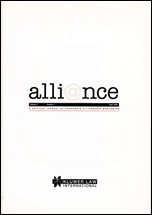
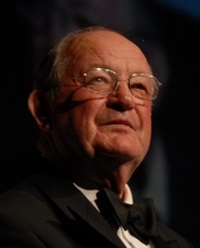
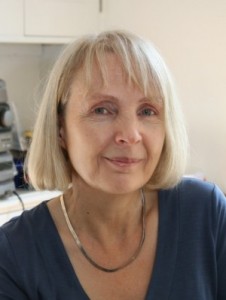


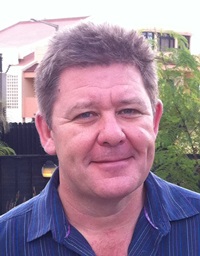
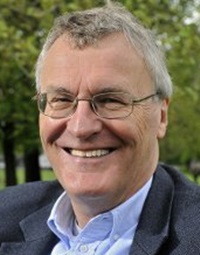
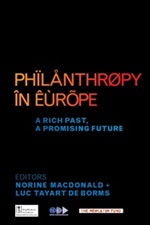




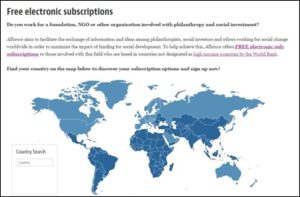


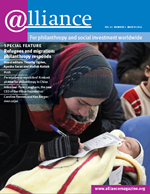


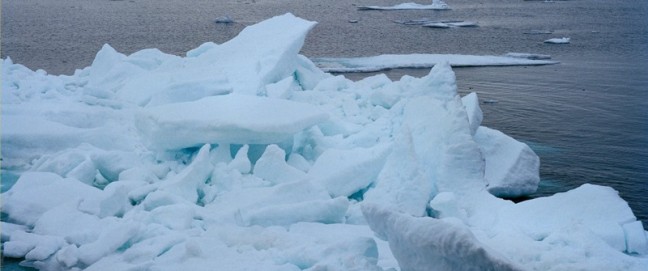

Comments (0)